How ‘Formula 1: Drive to Survive’ is creating a new kind of ‘Netflix effect’
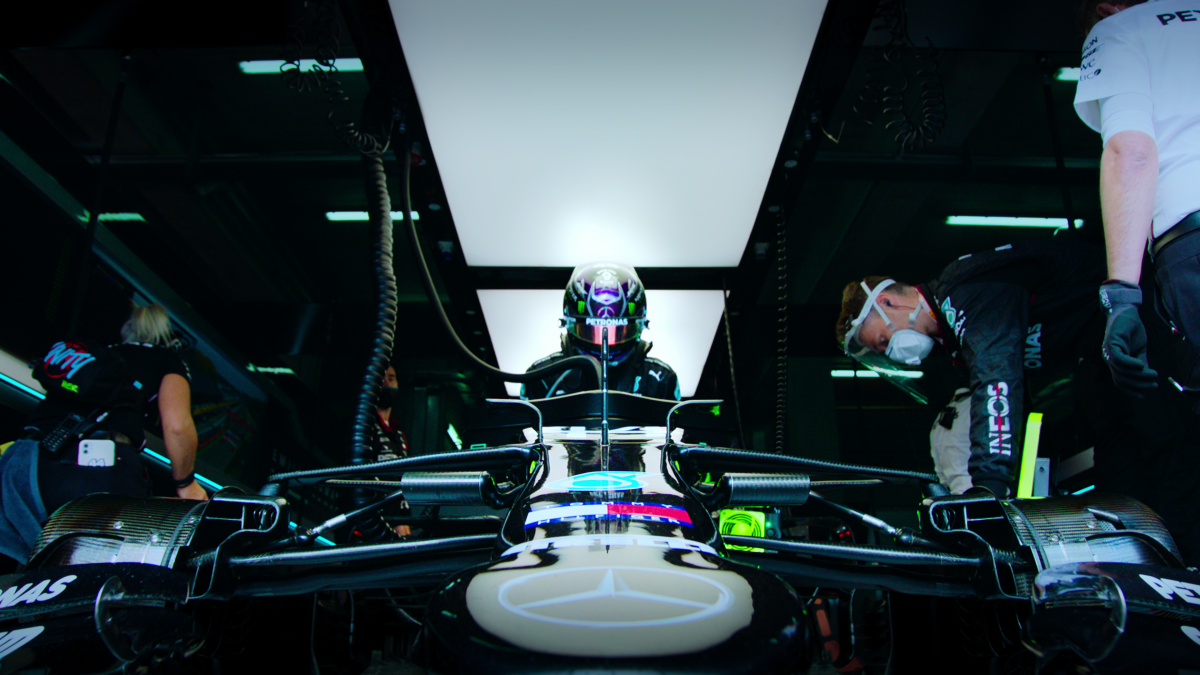
- Share via
This is the Los Angeles Times newsletter about all things TV and streaming movies. This week, we introduce you to “Love Is Blind: Japan,” meet the author of a new book marking “Buffy the Vampire Slayer’s” 25th anniversary and more. Scroll down!
Welcome to Screen Gab, the newsletter for everyone who hears the words “Netflix effect” and thinks “Breaking Bad.”
Those who’ve been around long enough to watch AMC’s golden age stemwinder unfold in real time will remember the off-season snowball effect of the series’ presence on Netflix, when a new cadre of fans would catch up, get hooked and join the legions already waiting for more episodes to arrive.
But what if the concept — always associated with scripted — also applied to sports? That seems to be the lesson of “Formula 1: Drive to Survive,” which returns Friday for its fourth season. The addictive fly-on-the-wall docuseries, which follows the likes of puckish Aussie driver Daniel Ricciardo and frustrated team principal Claire Williams, has generated almost unprecedented U.S. interest in Formula 1 — a sport that has never enjoyed mainstream success here and has often been a challenge even to watch.
Streamlining two-hour races into hi-def highlight reels (passes, crashes, starts and finishes), then weaving the footage into character-driven narratives full of backbiting, ambition, triumph and doubt, “Drive to Survive” is the perfect (re)introduction to F1.
Indeed, it might well be enough to compel viewers to sign up for the sport’s own subscription service, a nifty innovation that offers live races for the die-hard fan, shorter super-cuts for the busy gearhead, and classic battles for the F1 historian.
Not since the early days of the Netflix effect has a symbiotic relationship between platform and product been quite so effective, and there’s no reason to think other niche sports, from figure skating to tennis, couldn’t benefit from the same treatment. In fact, the streamer and the producers of “Drive to Survive” have already set up their next docuseries subject: professional golf.
At minimum, you can trust that last year’s championship fight between Max Verstappen and Lewis Hamilton will make the new season of “Drive to Survive” yet another binge-worthy thrill ride — whether you watched every Grand Prix already or not.
The complete guide to home viewing
Get Screen Gab for everything about the TV shows and streaming movies everyone’s talking about.
You may occasionally receive promotional content from the Los Angeles Times.
ICYMI
Must-read stories you might have missed
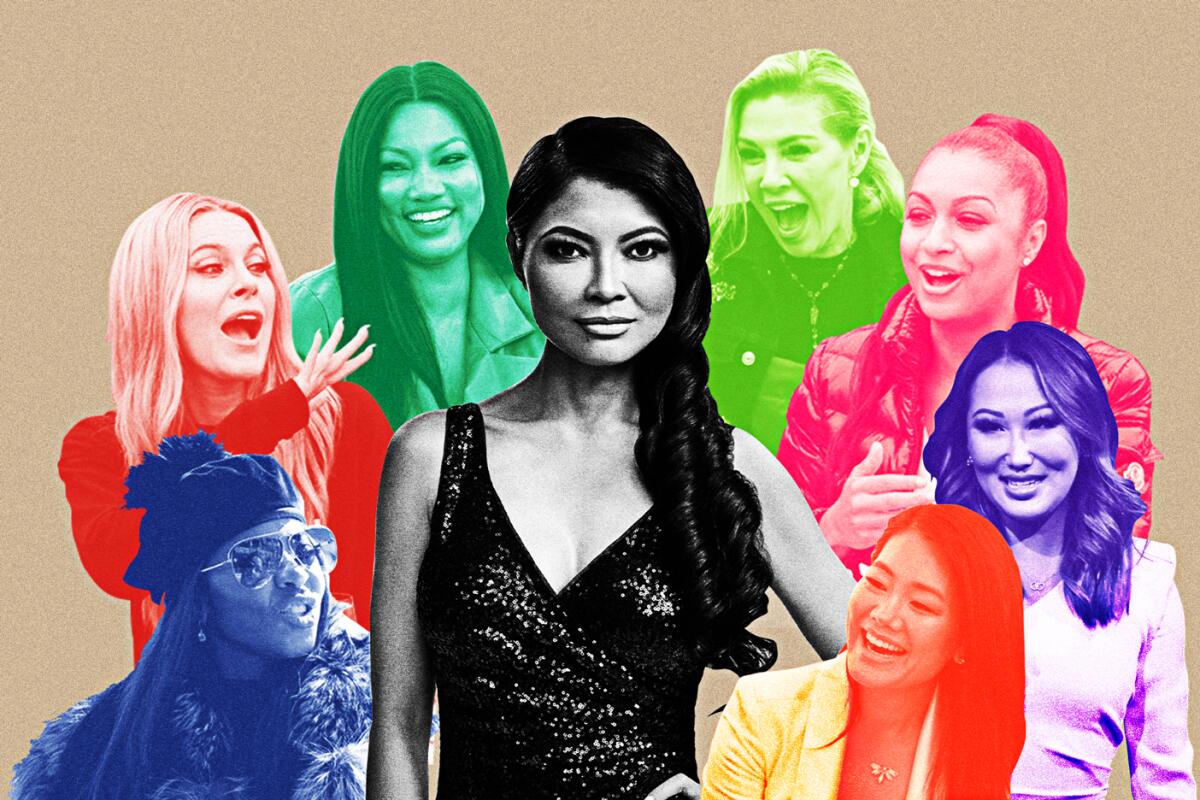
‘The Real Housewives’ integrated its casts. Then racism allegations ignited a crisis: Controversy on “Salt Lake City,” “New York” and “Dallas” has marred the reality TV juggernaut’s attempt to rectify long-standing diversity failures.
Mandy Moore breaks down the ‘devastating’ moment that just rocked ‘This Is Us’: In a special episode of “The Envelope,” Moore explains why Rebecca’s choice made her “so nervous” and teases what’s coming in the series finale.
Where ‘one wrong move’ means disaster: Inside the fragile art of ‘Domino Masters’: Experts from Fox’s new reality competition explain the techniques, storytelling and stress that go into making domino and chain reaction art.
How the U.S., Ukraine and the media have thrown a wrench into Russia’s disinformation machine: Weaponizing information abroad is a specialty of Putin’s, but two weeks into Russia’s unprovoked attack on Ukraine, he’s losing on that front — badly.
Turn on
Streaming recommendations from the film and TV experts at The Times
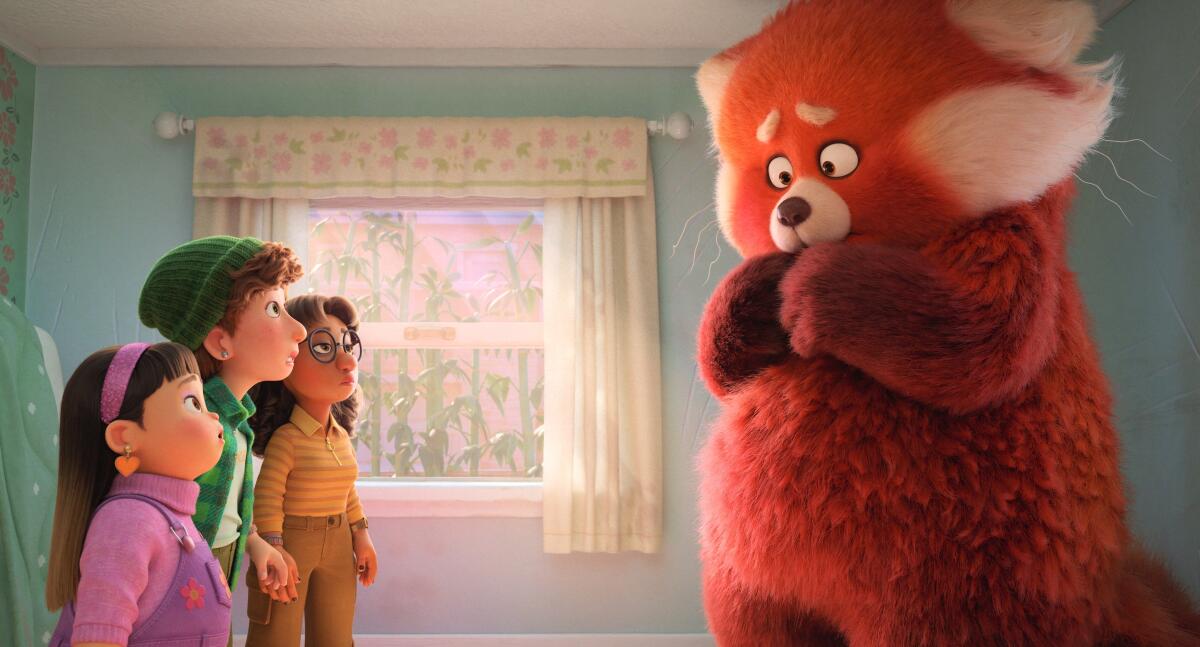
Pixar’s latest, “Turning Red” (Disney+), follows a 13-year-old Chinese Canadian girl who wakes up one morning and finds herself transformed into a gigantic — though cuddly and adorable — red panda. The fun, family-centric movie is directed by Domee Shi, the creator of the delicious, Oscar-winning short “Bao,” and stars Rosalie Chiang as the teenager and Sandra Oh as her mother. The coming-of-age adventure is set in the early 2000s, a beloved time of Tamagotchis, choker necklaces, butterfly hair clips and perfectly synchronized boy bands. (Billie Eilish and Finneas wrote the onscreen group’s catchy songs.) —Ashley Lee
The chief, or at least the immediate, attractions of the new BritBox series “Murder in Provence” are sensual: the rich voice of Roger Allam and the bright light of Aix-en-Provence, the vacation lure of the cafes and restaurants and the yellow-stone old-town streets through which the characters pass. Based on Canadian author M.L. Longworth’s “Verlaque and Bonnet” novels, it features British actors playing French characters on French soil in their native tongue and homegrown accents; it takes a minute to work out that they are not all expats. (As was the case in two separate ITV adaptations of “Maigret,” whose original star, Michael Gambon, Allam recalls a little in his delivery.) Allam, who was DCI Fred Thursday, young Morse’s mentor, on “Endeavour,” plays Antoine Verlaque, a French investigating judge (a senior detective); Nancy Carroll, who played Lady Felicia Montague on “Father Brown,” is Marine Bonnet, his romantic partner and new colleague, a criminal psychologist; and Broadway star Keala Settle (American, playing French with a British accent) is prominent as Verlaque’s second. The tone is light — there will be banter — but the procedural elements tend toward the naturalistic and the sadly human. Three feature-length episodes. —Robert Lloyd
Catch up
Everything you need to know about the film or TV series everyone’s talking about
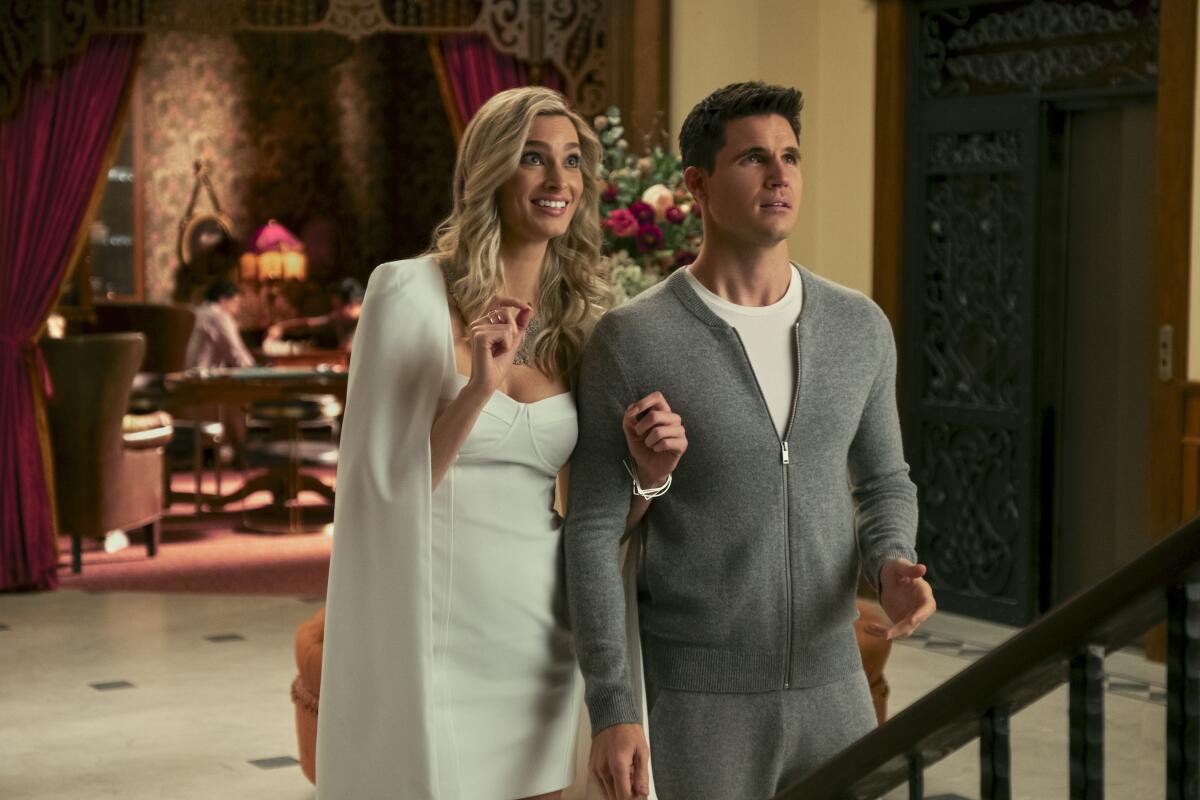
The boundless greed of capitalism meets man’s desire to live forever in “Upload,” Amazon Prime’s sci-fi satire where immortality is guaranteed — but only for those who can pay. The more one’s worth, the better the digital afterlife. Season 2, which premieres Friday, continues to follow Nathan (Robbie Amell), who was uploaded without his consent by his possessive and rich girlfriend, Ingrid (Allegra Edwards), after he died in a car wreck. She’s joined him in the luxe cloud known as Lakeview (think of it as an all-inclusive resort for data-dependent souls), but he’s pining for the company of his former, living customer rep, Nora (Andy Allo). His search for her, and her search for his killer, takes this clever series from Greg Daniels in a thrilling and wonderfully absurd new direction. When technology is pitted against privacy, folks on both sides of the existential veil (i.e., pay wall) literally fight to unplug. —Lorraine Ali
Guest spot
A weekly chat with actors, writers, directors and more about what they’re working on — and what they’re watching
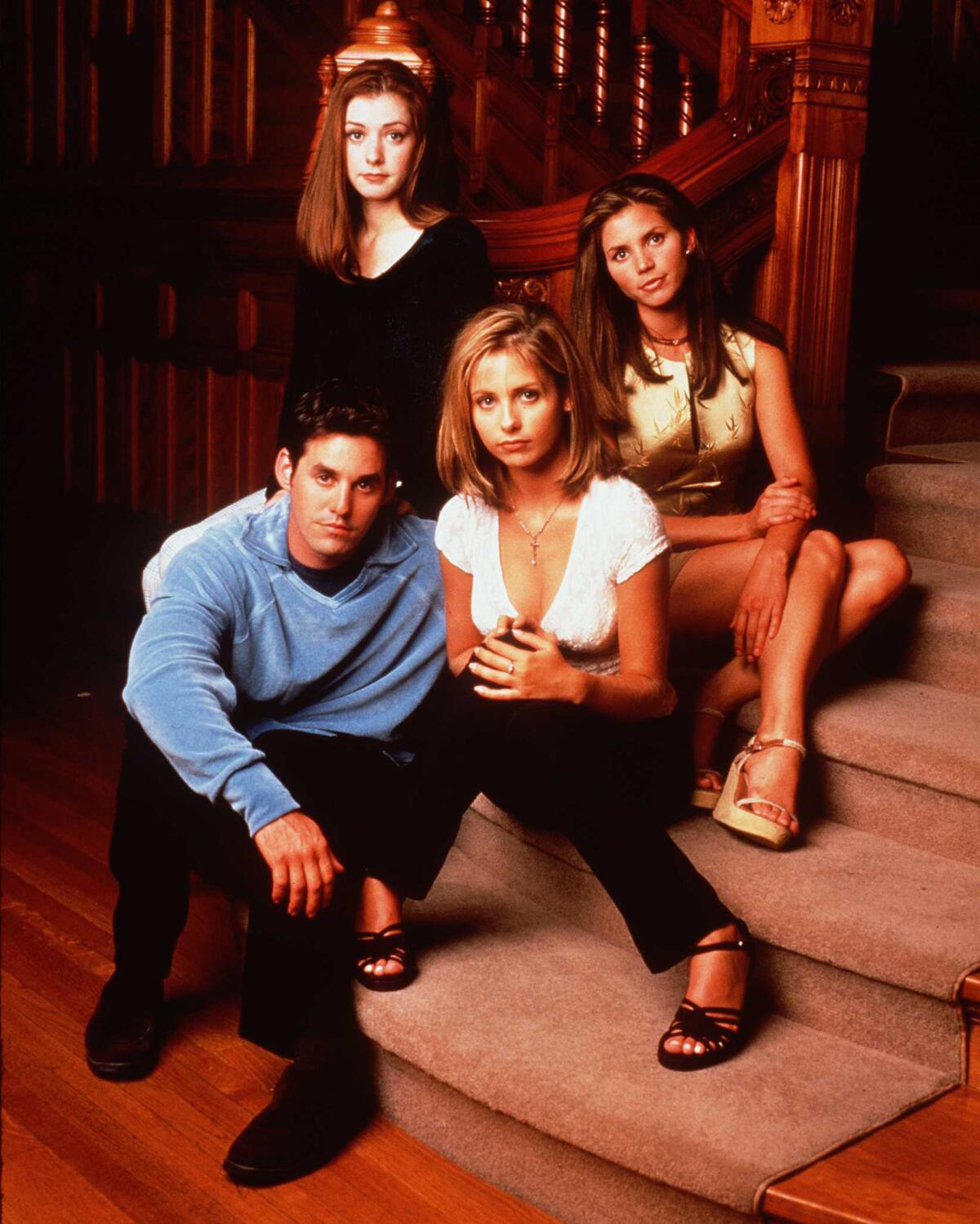
In his new book, “Into Every Generation a Slayer Is Born: How Buffy Staked Our Hearts,” author Evan Ross Katz grapples with the now-complicated legacy of “Buffy the Vampire Slayer,” which turns 25 this week. (Insert “Wanna feel old?” joke here.) In addition to working through the misconduct allegations against creator Joss Whedon, Katz also interviews members of the cast (including Sarah Michelle Gellar) and prominent “Buffy” fans (including Stacey Abrams) and celebrates the lasting influence of one of the greatest TV series ever made. He stopped by Screen Gab to tell us what he’s watching when he’s not watching “Buffy,” and to settle the debate over the series’ best episode. —Matt Brennan
What film or TV series have you watched recently that you have been recommending to everyone? Why?
Definitely, without question, “Abbott Elementary” (ABC, Hulu). I like a show with a lived-in premise that you can easily pop in and out of, and this show is that. It knows exactly what it is despite being brand-new, so it gives you a sense of comfort: They’re new here, but they understand the assignment. It’s laugh-out-loud funny but also has moments that are heartwarming and even tender. It manages to check a lot of boxes without feeling overly saccharine. It’s also pure joy to watch a show devoid of straight white men. Cannot recommend highly enough.
What’s your go-to film/TV comfort food — something you rewatch again and again?
I mean, perhaps it sounds obvious, but it’s obvious for a reason: “Sex and the City.” It feels in many ways like such a relic of a bygone time both in the culture and in New York City, but it also has moments that feel very of the now or even forward-thinking. “Sex and the City” is often minimized or flattened when thought of as a zeitgeist-y show, as it tends to pull out the broader moments or bigger themes throughout, but some of the throwaway moments/lines are my favorite. Miranda thinking her neighbor across the way is flirting with her, only to flash her boob and then learn that he was not, in fact, flashing her in return but rather her upstairs neighbor, a man ... that’s God-tier television, if you ask me.
Wade into the great debate of our time: What’s the best “Buffy” episode and why?
That is the great debate of our time, and I’m glad it’s been identified as such. The best episode of “Buffy” is a two-parter, “Surprise” and “Innocence,” which happens midway through the show’s stellar second season. It’s the moment the show goes from great to the kind of show that will be spoken about here, now, some 25 years later. Buffy, 17, watches the love of her life, a 244-year-old vampire, transform from a romantic to a soulless beast in the body of the man she once loved. She’s shocked. She cries. And then goes to battle against him. Because she knows she has to, despite the pain she’s in. She kicks him in the groin at the end. “You can’t do it. You can’t kill me,” he slyly tells her, taunting her. “Give me time,” she says as she walks away. And it’s in that moment, thanks largely to Sarah Michelle Gellar’s performance, that you witness Buffy grow up. It’s a marvelous thing to witness, and Gellar’s face conveys the machinations of every emotion that our young slayer is feeling and going through. And in her resolve, you know that she will win this battle.
Have the allegations against Joss Whedon changed your own relationship with “Buffy”? If so, how?
They absolutely have. They can’t not. This is a show about female empowerment whose creator has been accused by multiple women of disempowering them in the workplace. It taints the message of the show in now seeming almost hypocritical. I can’t undo the memories of this show, the confidence it instilled in me and the way it made me feel seen. That doesn’t go away. I don’t stop loving “Buffy.” But I don’t love it the way I once did. I hold it at a distance. I’m more cautious of it. But I have and always will take my cues from the women of “Buffy.” Seeing them still post memes, for instance, on the show’s 25th anniversary signals to me that “Buffy” is forever, and no man, no matter how powerful, can stop that.
Break down
Times staffers chew on the pop culture of the moment — love it, hate it or somewhere in between
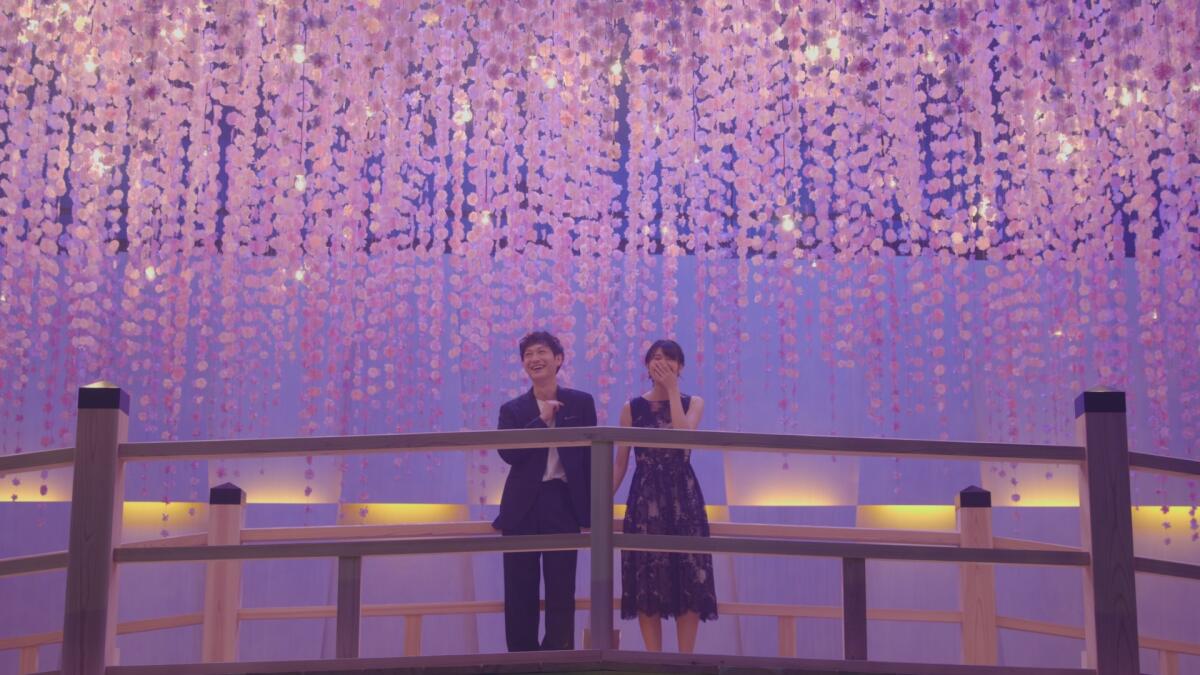
Last week, after gobbling up the “Love Is Blind” reunion special, spending an inordinate amount of time discussing the season with friends in various group chats and going deep down the Instagram rabbit hole on each cast member, I realized I was still, somehow, craving more of the world’s most insane reality show. So I decided to try one of the two international versions Netflix has made available in the U.S.: “Love Is Blind: Japan.” (There’s also “Love Is Blind: Brazil,” which I will no doubt devour next week.)
Though it follows the same basic format — single men and women date through a wall and get engaged before seeing each other in person, then live together to find out if they’re really a match — the show ended up being far more interesting and moving than I could have expected. Maybe it’s just the false sense of superiority that comes with reading subtitles for so many hours, but somehow “Love Is Blind: Japan” felt more like a sincere sociological experiment than a platform for thirsty fame-hounds looking to become permanent reality stars. There are few, if any, moments that bear the fingerprints of an overly aggressive producer looking to stoke drama. Instead, it’s a fascinating glimpse into dating and romance in a country where fewer women are choosing to marry or have children.
It also has famous hosts who don’t really need to be there. Takashi Fujii, a comedian, and Yuka Itaya, an actress and TV presenter, show up a few times throughout the season — usually the moment you started to forget they existed in the first place. They don’t add much, but unlike Nick and Vanessa Lachey, their appearances are at least amusing. (Also present in Japan: a lot of generic pop music on the soundtrack.)
It is very chaste. Seasoned viewers of English-language dating shows are accustomed to a relatively shocking level of on-camera intimacy, but you will not find anyone making out in a hot tub in this version of “Love Is Blind.” Almost none of the couples seal their engagements with a kiss, and we see very little PDA even once they are living together. Talk of sex and intimacy is nonexistent. We have no idea how far any of the couples get before their wedding day. Even the concept of physical attraction is discussed in vague terms. One woman says she feels uncertain about her fiance “as a man” — and that’s about as graphic as things get.
Almost everyone seems more sincere. Unlike certain Tesla-driving veterinarians in the U.S., the Japanese contestants seem to be there for the right reasons. None of them ask leading questions to find out how much their potential mate weighs. Instead, they talk about the important stuff: whether they want kids, what their professional goals are and what they like to put in their miso soup.
The set is gorgeous. The lounges where contestants gather between dates are decorated with lush trees and floral arrangements. Engaged couples see each other for the first time on a bridge surrounded by pink cherry blossoms. And there are lots of other whimsical flourishes: The contestants can write each other notes and slip them to each other through a post box in the wall. They also speak through a “moon” — a circle in the middle of the wood-paneled wall.
The whole show is a feast for the senses and a delightful travelogue. Especially if you like Japanese food. Once the couples leave the pods, we get to see more of the country, from the beaches of Okinawa to the steakhouses of Tokyo.
There’s a greater range of age and relationship experience. The Japanese singles, like their American counterparts, range from average to incredibly attractive. But “Love Is Blind: Japan” also includes several divorced contestants and singles who range in age from their early 20s to mid-50s, leading to some very interesting dynamics.
Most importantly, the experiment seems to work. There’s at least one couple so adorable they give Lauren and Cameron a run for their money. But you’ll have to watch to find out who they are. —Meredith Blake
What’s next
The TV shows and streaming movies to keep an eye on in the coming week

Fri., March 11
“The Adam Project” (Netflix): Shawn Levy and Ryan Reynolds’ “Free Guy” became a box-office bright spot during last summer’s doldrums. Here they reunite for a film about a man who travels back in time (to our present) and teams up with himself (as a teen) to find his missing girlfriend.
“The Last Days of Ptolemy Grey” (Apple TV+): There’s serious pedigree behind this limited series about a dementia patient and his caretaker: It stars Samuel L. Jackson, features “The Deuce” standout Dominique Fishback, is directed by Ramin Bahrani and is adapted by Walter Mosley from his own novel.
Tues., March 15
“Phoenix Rising” (HBO): “Westworld’s” Evan Rachel Wood details her allegations of abuse against Marilyn Manson, which the musician has denied, in Amy Berg’s two-part documentary about Wood’s domestic violence activism.
Thurs., March 17
“DMZ” (HBO Max): Rosario Dawson and Benjamin Bratt headline this futuristic DC Comics miniseries set amid a second U.S. Civil War. A subject perhaps not as futuristic as one would like.
“Minx” (HBO Max): A 1970s-set comedy about the origins of the first erotic magazine for women, with “New Girl’s” Jake Johnson as publisher. Produced by Paul Feig.
“Welcome to Flatch” (Fox): The mockumentary is back! Or perhaps it never left us. Either way, the acclaimed “Abbott Elementary” has company with this new sitcom about the eccentric beauty of small-town America. (Flatch is the name of the town.) Also produced by Paul Feig.
The biggest entertainment stories
Get our big stories about Hollywood, film, television, music, arts, culture and more right in your inbox as soon as they publish.
You may occasionally receive promotional content from the Los Angeles Times.



